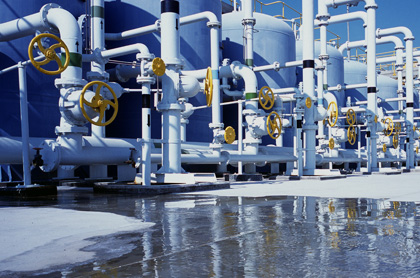In the world of water treatment, ensuring the longevity and efficiency of reverse osmosis (RO) membranes is crucial. One of the most persistent challenges faced by industries that rely on these systems is biofouling and slime formation. These issues not only reduce the performance of RO membranes but also increase maintenance costs and downtime. To tackle this problem, the use of a Reverse Osmosis Membrane Special Non-Oxidizing Biocide has become an essential solution. This biocide offers an effective and environmentally friendly approach to managing microbial fouling, ultimately improving system efficiency and membrane lifespan.
Biofouling, caused by the accumulation of microorganisms such as bacteria, algae, and fungi on the membrane surfaces, is a major issue in RO systems. These microorganisms form biofilms, or slimy layers, that adhere to the membrane, blocking the flow of water and reducing the membrane's ability to filter efficiently. Over time, this leads to decreased water production, higher energy consumption, and the need for frequent cleaning and maintenance. In severe cases, biofouling can lead to the premature failure of the membrane, which is both costly and inconvenient for businesses.

The Reverse Osmosis Membrane Special Non-Oxidizing Biocide works by targeting and eliminating these microorganisms before they can form such biofilms. Unlike oxidizing biocides, which can be harsh and degrade the membrane material, this non-oxidizing biocide offers a gentler, yet highly effective solution. It penetrates microbial cells, disrupting their structure and inhibiting their ability to multiply. This results in a significant reduction in the growth of bacteria, fungi, and algae, effectively preventing the formation of slime on the membrane. Because it does not cause oxidative damage, this biocide ensures that the integrity of the membrane remains intact, prolonging its operational life.
One of the standout features of the Reverse Osmosis Membrane Special Non-Oxidizing Biocide is its excellent slime-stripping properties. When applied, it helps to break down and remove existing biofilm buildup, allowing the system to perform at its peak efficiency. This process not only clears the membrane surfaces but also prevents future accumulation of organic and inorganic matter. The removal of slime layers significantly improves water flow through the membrane, enhancing overall filtration performance. By reducing the need for frequent cleaning or membrane replacement, businesses can enjoy reduced maintenance costs and increased uptime.
Furthermore, this biocide is compatible with all types of RO membrane elements available on the market. Whether your system is using cellulose acetate or thin-film composite membranes, the non-oxidizing biocide can be seamlessly integrated without any risk of damaging the membrane material. Its versatility makes it an ideal choice for a wide range of industries, from municipal water treatment plants to industrial applications such as pharmaceuticals and food processing.
The Reverse Osmosis Membrane Special Non-Oxidizing Biocide is not only effective at combating biofouling, but it also offers impressive stability across a wide range of pH levels. This stability ensures that the biocide remains effective even in fluctuating water conditions, making it a reliable choice for long-term use. Its biodegradability and environmentally friendly formulation also align with the growing global demand for sustainable water treatment solutions. Companies looking to minimize their environmental footprint can rely on this biocide to protect both their systems and the surrounding ecosystem.
In addition to its powerful biofouling prevention capabilities, the Reverse Osmosis Membrane Special Non-Oxidizing Biocide also plays a key role in controlling scaling. RO systems often face issues with mineral scale buildup, including calcium carbonate, calcium sulfate, and silica, all of which can cause significant damage to membrane surfaces. By controlling scaling at low dosages, this biocide ensures that the membrane remains free from mineral deposits, which can otherwise impair its function and shorten its lifespan.
When it comes to optimizing the use of this biocide, it's important to tailor the dosage to the specific water quality and system conditions. Typically, for routine operation, the biocide dosage is kept between 3 and 8 ppm (parts per million), with continuous dosing. However, during equipment cleaning, a higher concentration—up to 20%—is recommended to ensure effective biofilm removal and system cleaning. This flexibility in dosage allows businesses to fine-tune their biocide usage for optimal results, whether they are maintaining a routine operational flow or addressing a more challenging contamination issue.
In conclusion, the Reverse Osmosis Membrane Special Non-Oxidizing Biocide is a crucial tool for industries looking to maximize the efficiency and lifespan of their RO systems. By preventing biofouling and slime formation, controlling scaling, and ensuring compatibility with various membrane types, this biocide provides a comprehensive solution to the challenges of membrane maintenance. Its ease of use, environmental benefits, and cost-effectiveness make it a top choice for businesses seeking to optimize their water treatment processes. If you're looking for a reliable and powerful biocide to protect your RO membranes and improve your system's performance, look no further than the Reverse Osmosis Membrane Special Non-Oxidizing Biocide.
 En
En
 عربى
عربى 中文简体
中文简体

